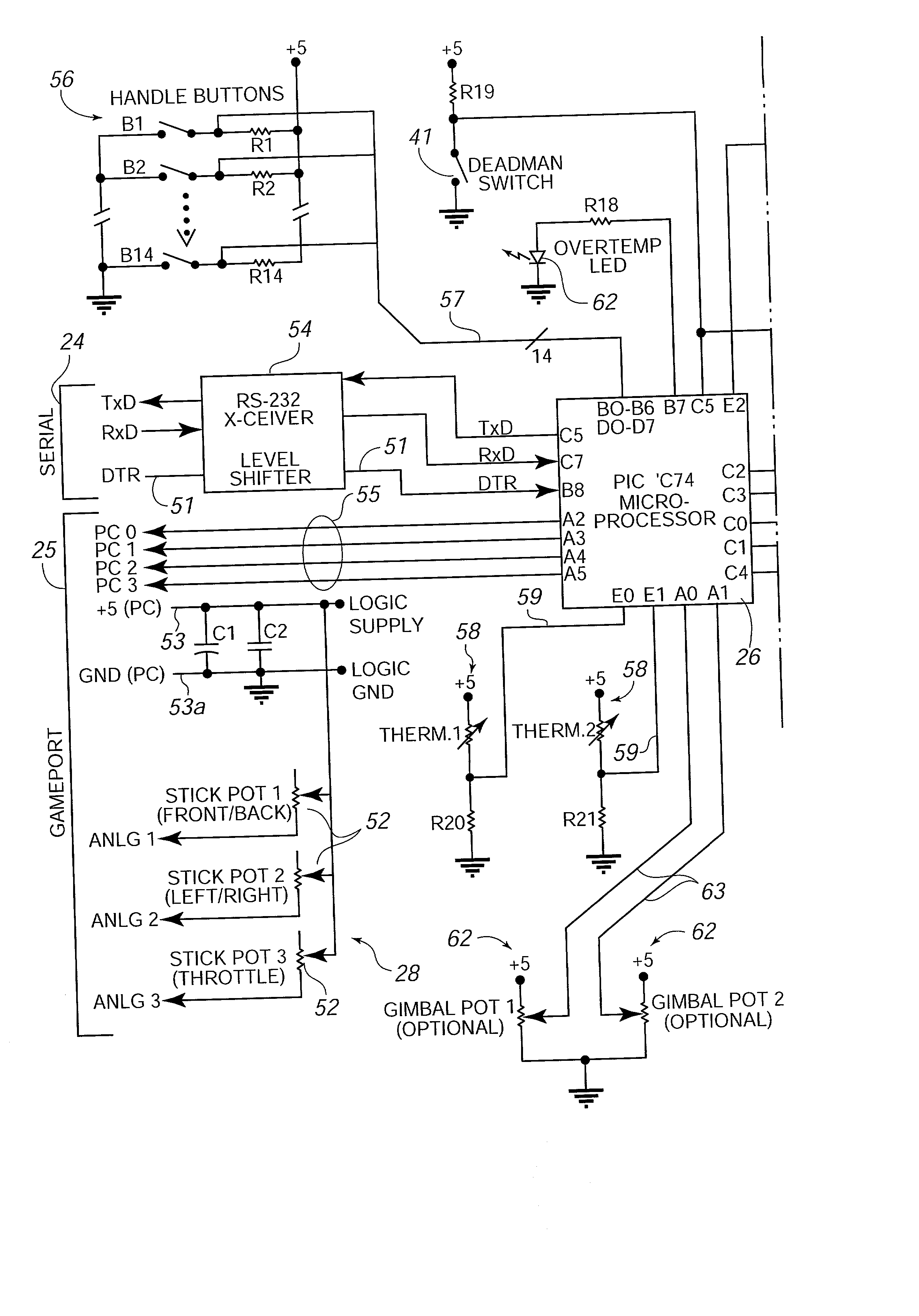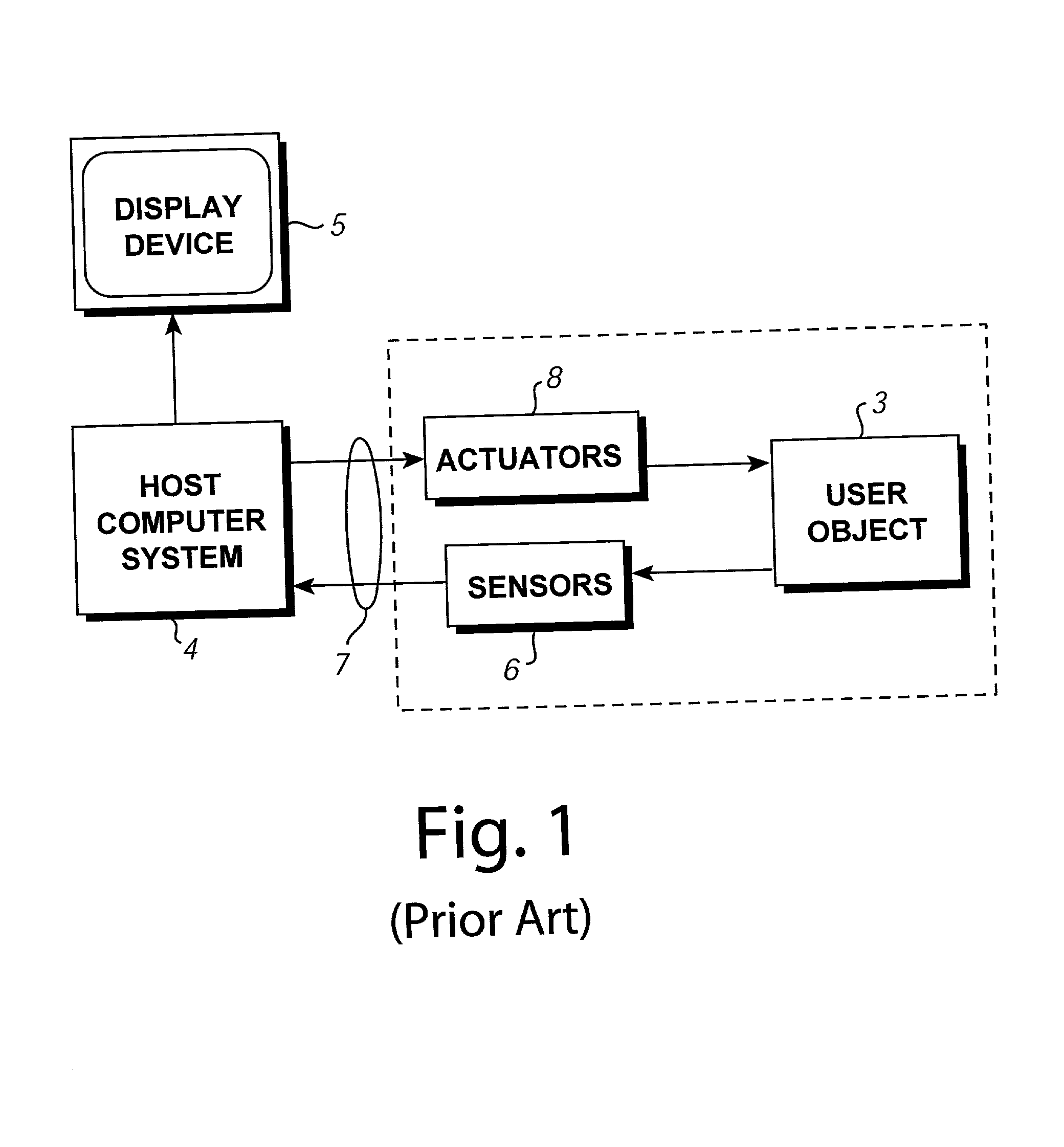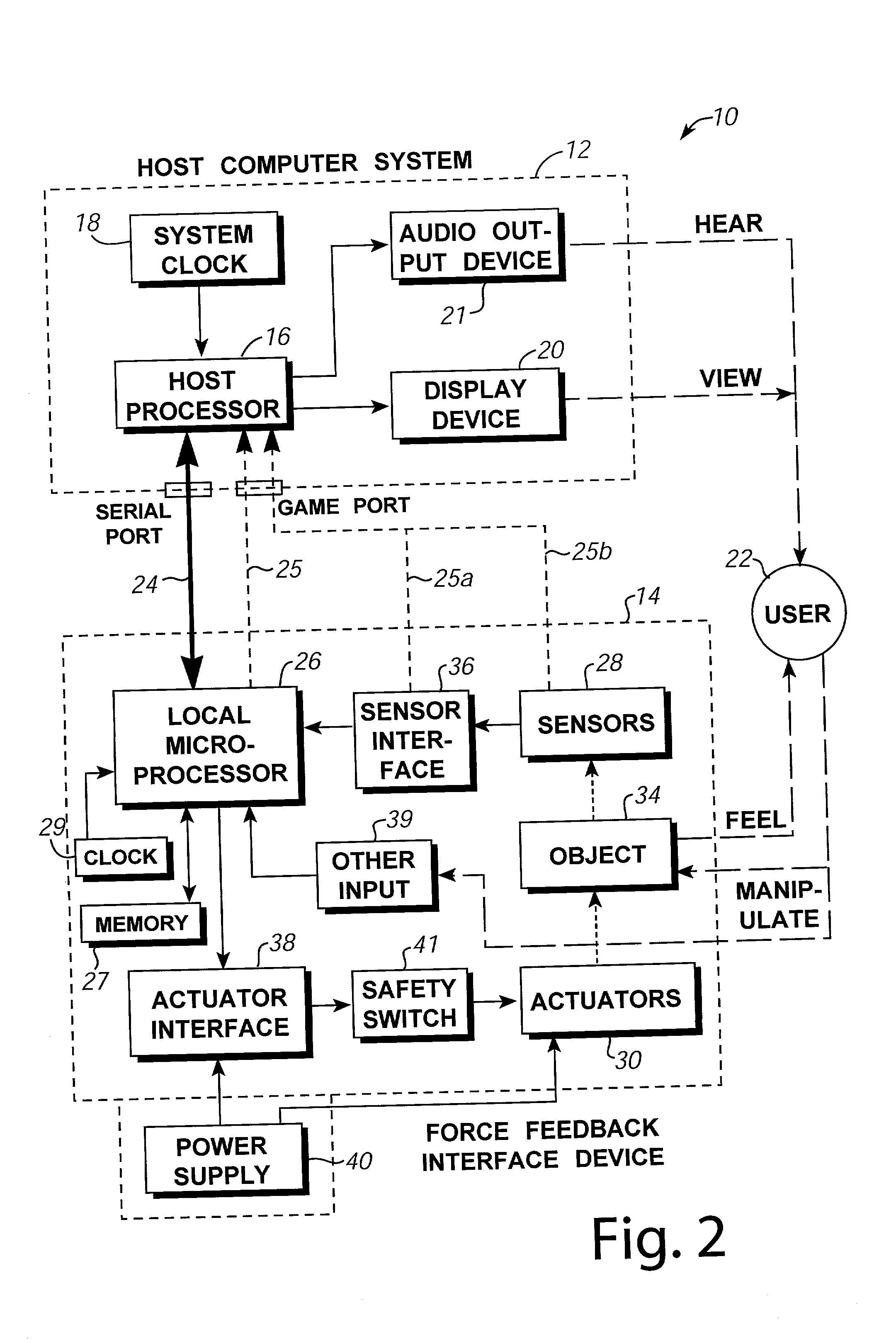Power management for interface devices applying forces
- Summary
- Abstract
- Description
- Claims
- Application Information
AI Technical Summary
Benefits of technology
Problems solved by technology
Method used
Image
Examples
embodiment 50
[0074] FIG. 3 is a schematic diagram of an example of a specific embodiment 50 of the interface device 14. Local microprocessor 26, in this example, is a PIC16C74 available from Microchip and having 14 address lines and 8 data lines. This microprocessor includes an internal architecture that splits memory into two partitions and allows fast program executions, and is thus well-suited for high speed force feedback processing. This embodiment preferably includes local memory 27, such as ROM, as well as local clock 29 on board the microprocessor.
[0075] Interface device 50 is intended to communicate with host computer 12, as explained with reference to FIG. 2, using both a serial interface such as an RS- 232 interface as well as a second interface 25, which, in the described embodiment, a game port interface as typically found on an MBM-compatible personal computer (PC).
[0076] Sensors 28 are used to sense the position of user object 34 in provided degrees of freedom. In the described em...
embodiment 80
[0095] FIG. 4a is a block diagram of an alternate "recoil" embodiment 80 of the force feedback control system 10 of FIG. 2. In recoil control system 80, a local device microprocessor 26 is not necessary to provide force feedback and the host computer sends no signals, or only minimal signals, to the interface device 14. The recoil embodiment is thus a "reflex" interface device, in that forces are output on user object 34 independently of host computer 12, and these forces depend only on local control events (e.g. a press of a button by the user). The reflex process includes outputting a force when a button is pressed with no communication from the host.
[0096] The position of user object 34 is sensed by sensors 28, and the sensors send position or other related signals to the host computer 12. The control loop includes buttons or other input devices 39, which sense actions of the user such as when the user pushes one of the buttons. The buttons 39 provide input signals to a recoil re...
embodiment 130
[0139] the interface device has several advantages. Since no local microprocessor 26 or UART are needed in interface device 130, the cost of the interface device is reduced greatly. The implementation of a serial data stream allows the host to send a greater number of control signals and have much greater control than in the embodiments of FIGS. 4a-4f. Many more types of commands can be sent by the host using the serial interface than the three maximum commands allowed in the parallel bus implementation of an RS-232 interface in the above "recoil" embodiments. Also, force values or other commands can be sent by the host to better control the actuators. In addition, the logic components of interface device 130 shown in FIG. 5 can be readily provided on a single chip implemented as an ASIC or FPGA. This allows the circuitry for interface device 130 to be manufactured in high volume at a very low cost.
[0140] FIG. 6 is a schematic diagram illustrating a low-cost and compact power circui...
PUM
 Login to View More
Login to View More Abstract
Description
Claims
Application Information
 Login to View More
Login to View More - R&D
- Intellectual Property
- Life Sciences
- Materials
- Tech Scout
- Unparalleled Data Quality
- Higher Quality Content
- 60% Fewer Hallucinations
Browse by: Latest US Patents, China's latest patents, Technical Efficacy Thesaurus, Application Domain, Technology Topic, Popular Technical Reports.
© 2025 PatSnap. All rights reserved.Legal|Privacy policy|Modern Slavery Act Transparency Statement|Sitemap|About US| Contact US: help@patsnap.com



